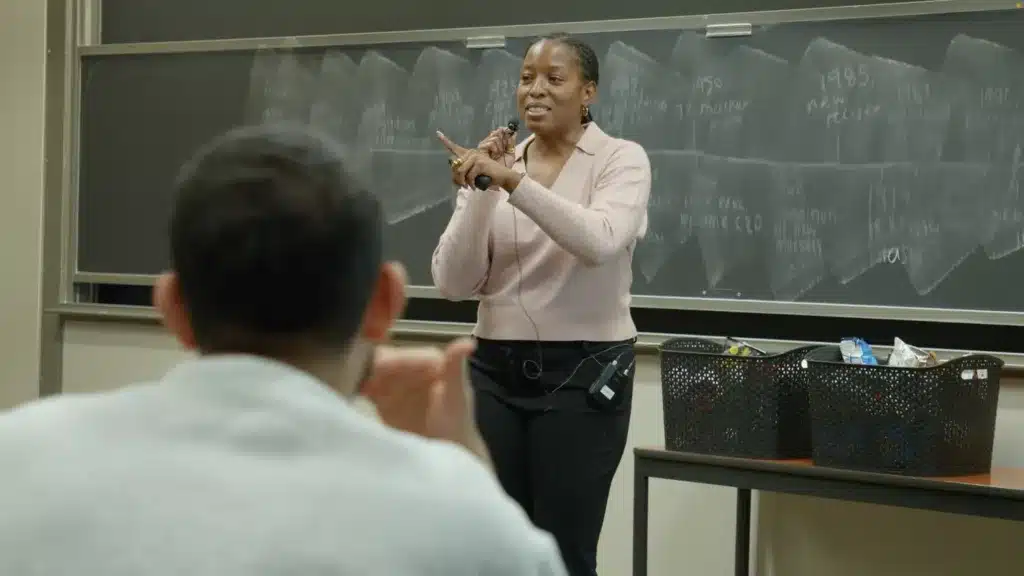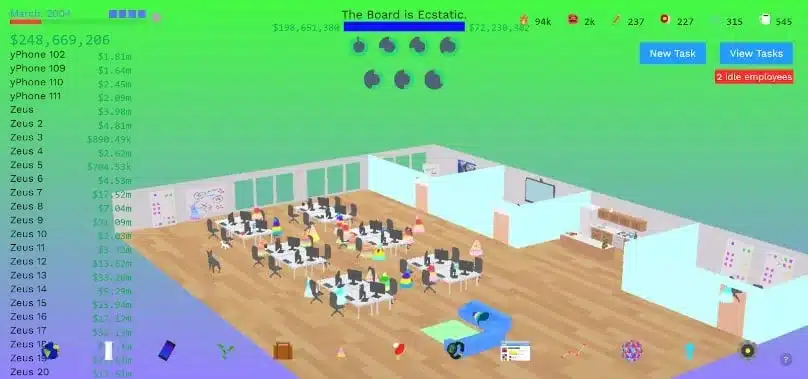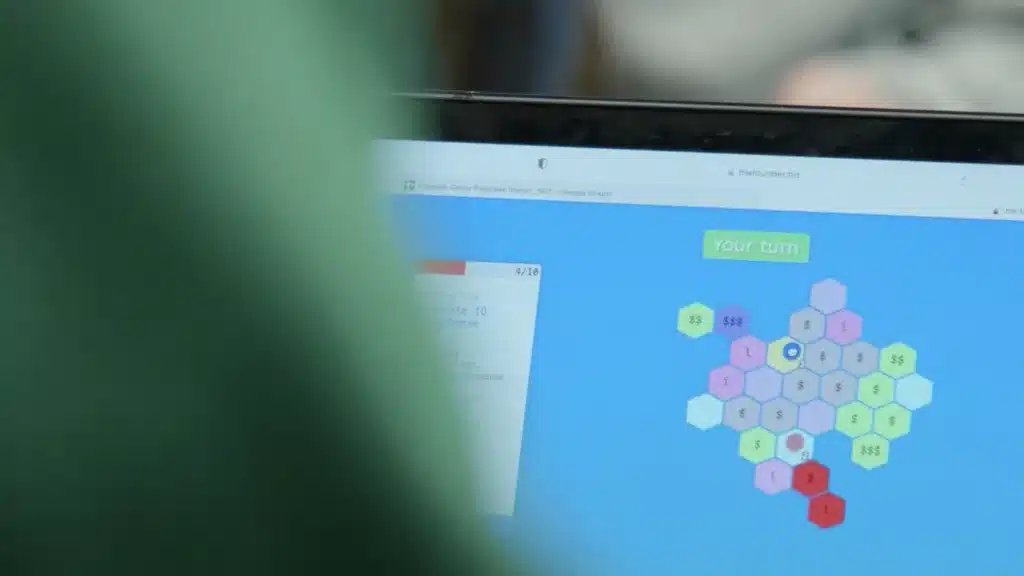How playing an online game gives students an insider view of running an organization

Overview
In this video, Professor Njoke Thomas from the Carroll School of Management describes her experience designing and implementing a game-based simulation in her organizational behavior course.
Background
Njoke Thomas is an Assistant Professor of Management at the Carroll School of Management. where she teaches Introduction to Organizational Behavior which is part of the core curriculum for CSOM majors and leadership minors. This class is intended to give students some perspective on themselves as future contributors and likely decision makers in various types of organizations.
While Organizational Behavior is partly a theoretical course, drawing on concepts from psychology and sociology, it is also intended to be as experiential as possible.

Defining the Challenge
In her first year of teaching this course, she noticed students were quite insightful in their analysis problems, but their solutions often weren’t feasible.
As an example, a group of students proposed abolishing Prime Day as a means of improving worker conditions. It was a noble idea, but not likely to please shareholders. It was challenging for them grasp how their decision might intersect with other factors, how they might pull one thread and it affects other parts of the system they didn’t mean to touch. They were missing the experience of making some of the tough choices they prescribed.

Exploring Solutions
Participating in the CDIL design thinking working group gave her the opportunity to probe this challenge more deeply and brainstorm ways to address this gap in her students’ learning in the course.
Through the working group design process, she decided she wanted to find or create a game that offered students an immersive experience in an organization and provided real time feedback on decisions, big and small.
To figure out how to bring this idea to reality, she met with Andrew Croft, a CDIL learning designer, who was able to help her evaluate a number of options and discover an existing business simulation game called the Founder.
As she began immersing herself in the Founder Game, she saw almost immediately that the game aligned well with the goals and topics of the course. The founder has to consider different employee contributions while assembling a team, negotiate employee compensation, consider how much work should be assigned to strike a balance between burnout and boredom and most important of all, what perks to offer – coffee or kegs! All of these choices would also have implications for how the company performed and the player gets continual feedback about the satisfaction of workers, customers, investors.
She decided to have students play the Founder Game in their project teams so any insights they had about organizations would remain and become part of their toolkit for the team project.

Prototyping and Testing
The next step in learning the design working group was to prototype her assignment and test it out with actual students. This was essential because she needed to understand the logistics of using the game this way: how long it would take to get through a game year, what roles were necessary to function as a team player, how much or how little should I explain before the game.
This first round of testing with a group of grad students helped her develop a progress report spreadsheet that prompts the team to reflect on their decision-making process. The second testing session she conducted was with a group of undergraduates students (who she was able to pay for their time) helped cement her decision to dedicate a full session allowing time for debrief.
What she learned from this testing allowed her to make several preemptive changes so that her students first experience could be improved, rather than just waiting until the next time she teaches the class.

Outcomes and Next Steps
In Professor Thomas’s assessment, the student engagement with this activity was well beyond her expectations — a truly an immersive experience. The most obvious insight for the students was the importance of leveraging the variety of expertise in the team and learning to recover from early challenges like running out of money and losing their venture.
Moving forward she’s considering how to incorporate it more strategically into the course as a whole: at what point in the semester is the best time to introduce the game and how to do a better job of referencing back to game time reflections to illustrate later concepts.
She also has been in discussion with colleagues in her department who teach this class about how they might use the game in their courses. He hope is they will be able to share their experiences so they can gain insights from each other that will inform and enhance future iterations of the course.
